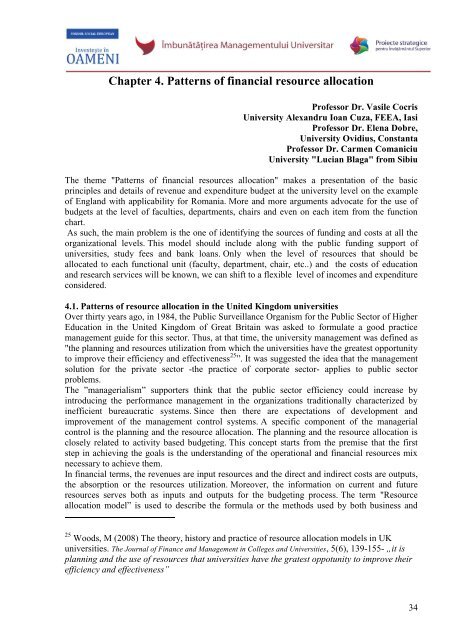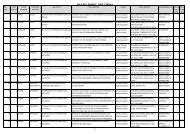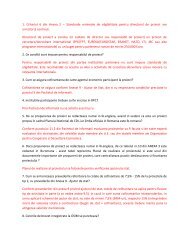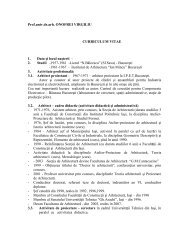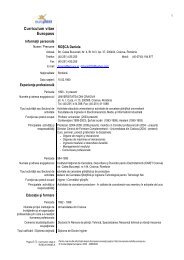Modul de formare-Managementul resurselor financiare - uefiscdi
Modul de formare-Managementul resurselor financiare - uefiscdi
Modul de formare-Managementul resurselor financiare - uefiscdi
- No tags were found...
You also want an ePaper? Increase the reach of your titles
YUMPU automatically turns print PDFs into web optimized ePapers that Google loves.
Chapter 4. Patterns of financial resource allocation<br />
Professor Dr. Vasile Cocris<br />
University Alexandru Ioan Cuza, FEEA, Iasi<br />
Professor Dr. Elena Dobre,<br />
University Ovidius, Constanta<br />
Professor Dr. Carmen Comaniciu<br />
University "Lucian Blaga" from Sibiu<br />
The theme "Patterns of financial resources allocation" makes a presentation of the basic<br />
principles and <strong>de</strong>tails of revenue and expenditure budget at the university level on the example<br />
of England with applicability for Romania. More and more arguments advocate for the use of<br />
budgets at the level of faculties, <strong>de</strong>partments, chairs and even on each item from the function<br />
chart.<br />
As such, the main problem is the one of i<strong>de</strong>ntifying the sources of funding and costs at all the<br />
organizational levels. This mo<strong>de</strong>l should inclu<strong>de</strong> along with the public funding support of<br />
universities, study fees and bank loans. Only when the level of resources that should be<br />
allocated to each functional unit (faculty, <strong>de</strong>partment, chair, etc..) and the costs of education<br />
and research services will be known, we can shift to a flexible level of incomes and expenditure<br />
consi<strong>de</strong>red.<br />
4.1. Patterns of resource allocation in the United Kingdom universities<br />
Over thirty years ago, in 1984, the Public Surveillance Organism for the Public Sector of Higher<br />
Education in the United Kingdom of Great Britain was asked to formulate a good practice<br />
management gui<strong>de</strong> for this sector. Thus, at that time, the university management was <strong>de</strong>fined as<br />
"the planning and resources utilization from which the universities have the greatest opportunity<br />
to improve their efficiency and effectiveness 25 ”. It was suggested the i<strong>de</strong>a that the management<br />
solution for the private sector -the practice of corporate sector- applies to public sector<br />
problems.<br />
The ”managerialism” supporters think that the public sector efficiency could increase by<br />
introducing the performance management in the organizations traditionally characterized by<br />
inefficient bureaucratic systems. Since then there are expectations of <strong>de</strong>velopment and<br />
improvement of the management control systems. A specific component of the managerial<br />
control is the planning and the resource allocation. The planning and the resource allocation is<br />
closely related to activity based budgeting. This concept starts from the premise that the first<br />
step in achieving the goals is the un<strong>de</strong>rstanding of the operational and financial resources mix<br />
necessary to achieve them.<br />
In financial terms, the revenues are input resources and the direct and indirect costs are outputs,<br />
the absorption or the resources utilization. Moreover, the information on current and future<br />
resources serves both as inputs and outputs for the budgeting process. The term "Resource<br />
allocation mo<strong>de</strong>l” is used to <strong>de</strong>scribe the formula or the methods used by both business and<br />
25 Woods, M (2008) The theory, history and practice of resource allocation mo<strong>de</strong>ls in UK<br />
universities. The Journal of Finance and Management in Colleges and Universities, 5(6), 139-155- „it is<br />
planning and the use of resources that universities have the gratest oppotunity to improve their<br />
efficiency and effectiveness”<br />
34


